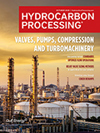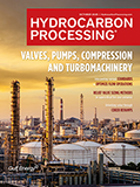Engineering & Design
2022 HP Awards Finalists
<em>Hydrocarbon Processing</em>, the downstream processing sector’s leading technical publication for 100 yr, has announced the finalists for its sixth annual <em>HP</em> Awards, which celebrate innovative technologies and people that have been instrumental in improving facility operations over the past year.
ASTM D5453 vs. D7039 and the importance of oxygen correction for B100 samples
The use of biodiesel is rapidly becoming more popular due to growing trends both inside and outside the petroleum industry.
U.S. outlines roadmap to boost sustainable aviation fuel
The U.S. Energy Department on Friday issued a plan detailing a government-wide strategy for ramping up production and use of sustainable aviation fuels.
BASF introduces X3D, a revolutionary catalyst shaping technology for optimized catalyst performance
New X3D technology to produce catalysts with optimal shape to achieve best performance and efficiency while reducing energy consumption.
Carbon recycler LanzaTech strikes financing deal with Brookfield
Carbon recycler LanzaTech NZ Inc has struck a deal with Brookfield Renewable Corp for a $500 MM commitment by the investment firm to finance upcoming projects using LanzaTech's technology.
Technip Energies to perform FEED for gas plant associated with carbon capture in Malaysia
Technip Energies has been selected by PTTEP HK Offshore Ltd. to perform the Front-End Engineering Design (FEED) of the Lang Lebah Onshore Gas Plant 2 (OGP2) project located in Bintulu, Sarawak, in Malaysia.
px Group appointed to operate GIDARA's flagship Bio-Methanol plant, Amsterdam
px Group intends to deliver Net Zero by reducing carbon emissions on all the sites it owns, operates and maintains whilst ensuring an elite performance in the areas of safety, availability, efficiency and reliability of its clients’ assets.
Danish Power-to-X partnership breaks ground on first of its kind green ammonia project
The partners officially started construction of the demonstration plant in Lemvig, Denmark, that will produce green ammonia based on renewable power and electrolysis of water.
New awards for an overall value of approximately €200 MM in Maire Tecnimont’s technology-driven business
Maire Tecnimont announced that its main subsidiaries Tecnimont, KT-Kinetics Technology and Stamicarbon have been granted new awards for a total amount of approximately €200 MM for licensing as well as EPC activities.
Atlas Copco has acquired a distributor of compressors in New Mexico, USA
Atlas Copco has acquired the operating assets of the compressor business of Mesa Equipment & Supply Company.

- INEOS to invest €250 MM in Lavera cracker modernization project in France 11/19
- BASF adds ISCC EU certification to certified biomass-balanced methanol portfolio 11/19
- Ducor Petrochemicals, Blue Circle Olefins partner to create a fully circular supply chain for polypropylene 11/18
- World's first: Air Liquide’s innovative technology converts ammonia into hydrogen at industrial scale 11/18
- Borouge to supply advanced polyolefin solutions for next-generation vehicles 11/18
- ASTM International signs MoU with Gulf Cooperation Council Laboratory Company for Technical Services (GCC Lab TSCo.) 11/18




